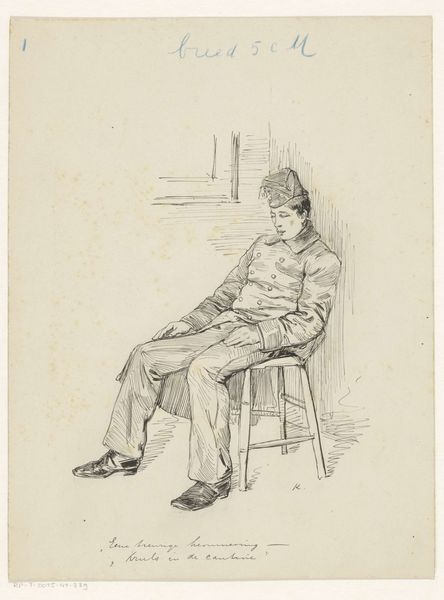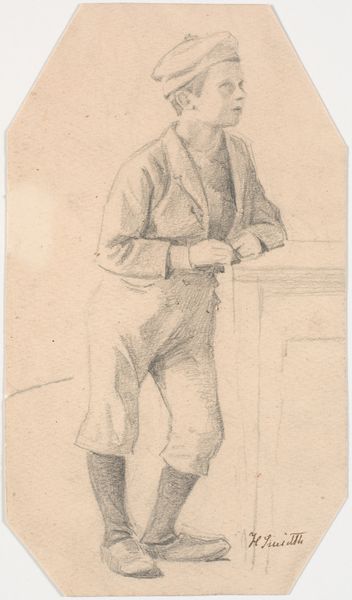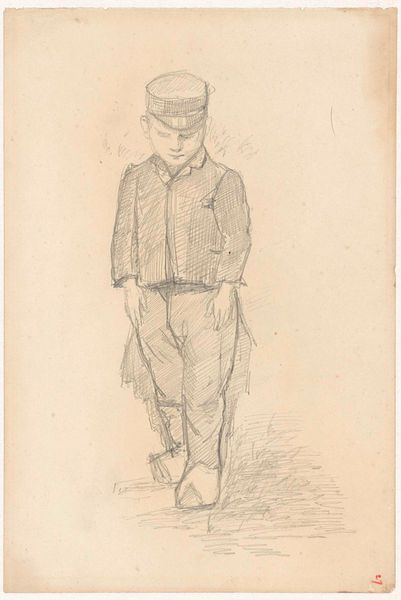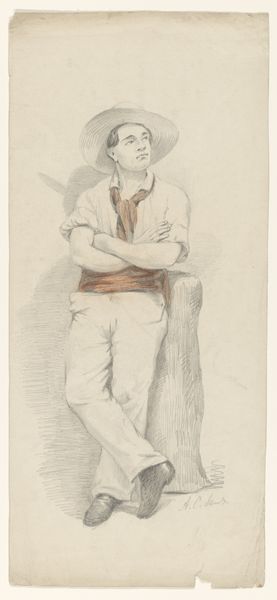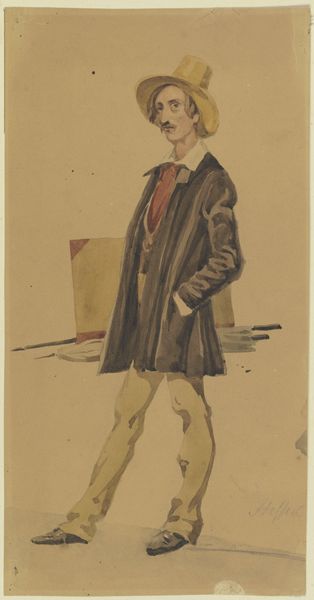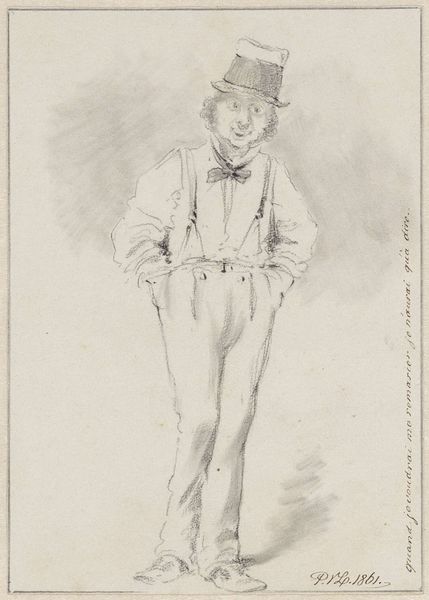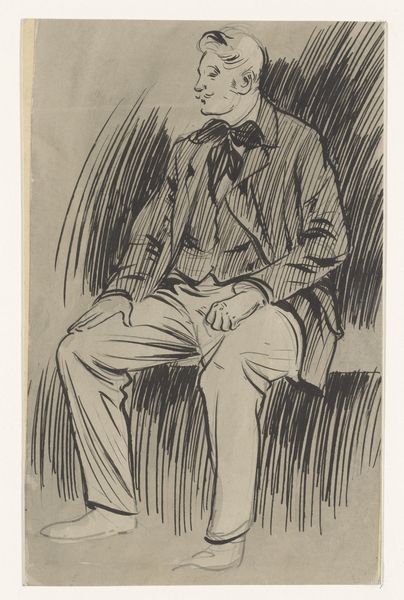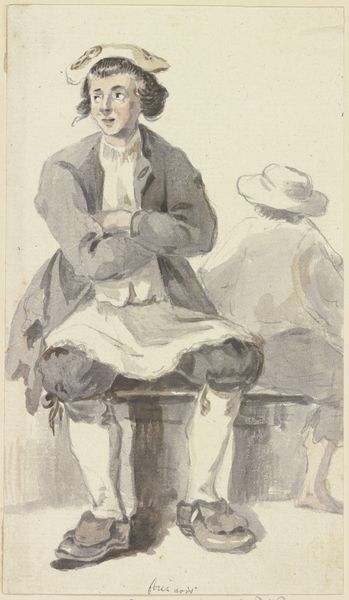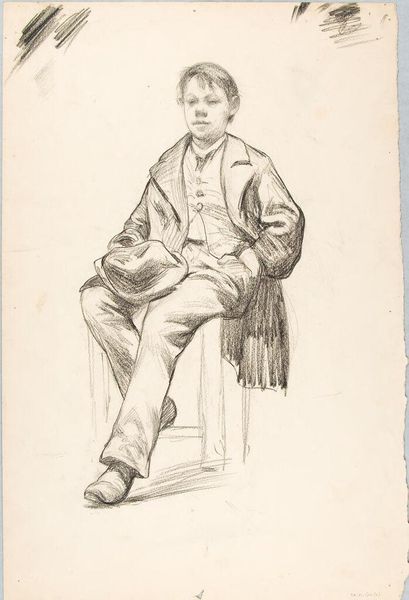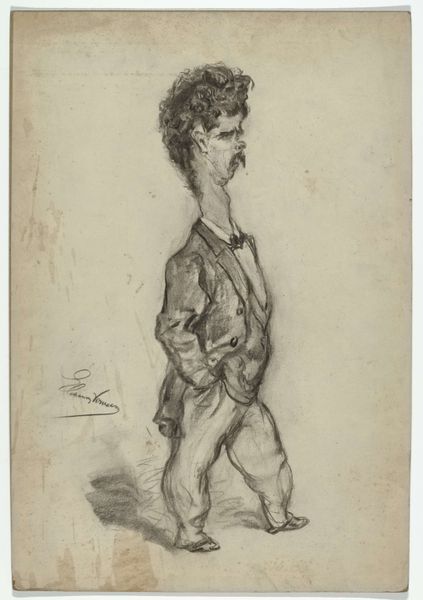
drawing, painting, paper, watercolor
#
portrait
#
drawing
#
painting
#
figuration
#
paper
#
watercolor
#
pencil drawing
#
romanticism
#
genre-painting
#
realism
Copyright: Public Domain
Curator: Here we have Heinrich Rumbler’s watercolor, “Leibold of Niederrad”, housed here at the Städel Museum. Editor: He looks so grounded. There's a humble quality to the image; the muted colors give it a raw, almost photographic realism. His posture and direct gaze exude a quiet confidence. Curator: Indeed, Rumbler captured a very specific type in his genre painting and portraits. The artist moved within circles interested in typological depictions of the inhabitants of Frankfurt and its surrounding areas. They wanted to document their traditional clothing and customs. Editor: I'm struck by the way he portrays the clothing and even Leibold's posture. The kerchief and cap seem like emblems. Perhaps this piece is trying to evoke a larger statement about German identity or working-class representation in the era it was made? Curator: It’s difficult to assign a specific date to this work. If you consider it within its time, one can definitely recognize romantic undercurrents typical for the 19th century. These were times of cultural and social upheavals; perhaps artists like Rumbler felt that documenting specific individuals was crucial as harbingers of authentic folk traditions and customs, almost threatened with extinction. Editor: I see the echo of the Romantic. Those painters frequently relied on very grounded imageries to evoke strong sensations—be it delight or terror. Leibold becomes more than just a man; he is the incarnation of place and time. Curator: One could also look at it from the tradition of portraiture—specifically, how this one differs. Unlike those commissioned by wealthy patrons for purposes of status, Rumbler's painting focuses on working-class figures, elevating them. That, I think, challenges the prevalent art establishment of his time. Editor: Right. It flips the symbolic narrative around, doesn’t it? It’s compelling how Rumbler manages to make something seemingly ordinary carry such resonant social weight. The symbolism lies in the sitter’s perceived identity rather than wealth and affluence. Curator: I agree completely. I always find new layers each time I encounter "Leibold of Niederrad." Editor: It is, indeed, deceptively simple in its visual language, isn't it? Makes you think about the deeper significance behind portraying everyday subjects.
Comments
No comments
Be the first to comment and join the conversation on the ultimate creative platform.

